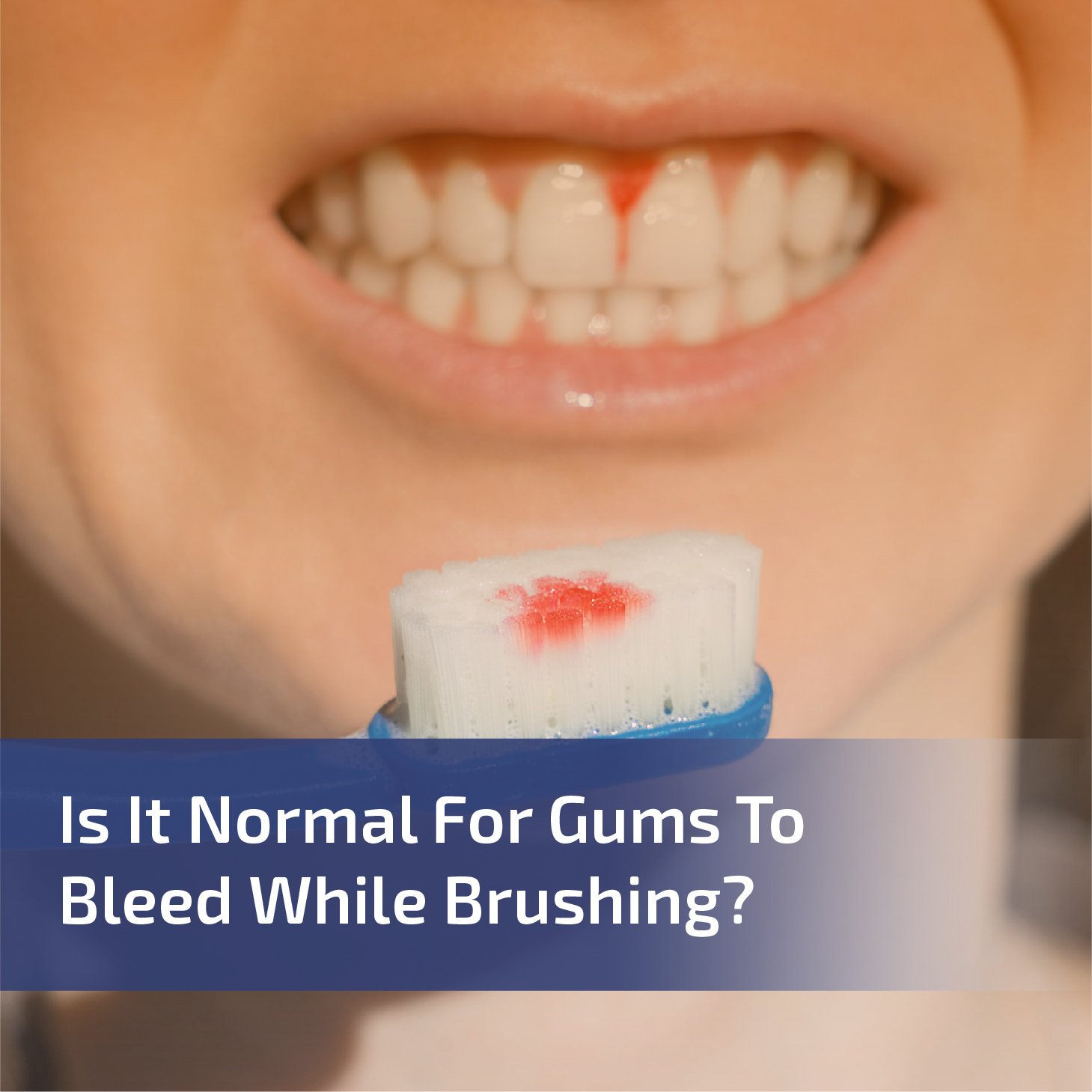
Maintaining good oral health is crucial for overall well-being. Brushing our teeth is an essential part of our daily oral hygiene routine, but what happens when our gums start to bleed during brushing?
Many individuals may wonder if it is normal for gums to bleed while brushing. In this comprehensive article, we will delve into the topic and provide you with expert insights and answers to common questions regarding bleeding gums.
Bleeding gums while brushing is not considered normal and can be an indication of an underlying oral health issue. Healthy gums should not bleed during routine brushing or flossing. The presence of bleeding gums could be a sign of gum disease, improper oral hygiene practices, or other factors that warrant attention and appropriate dental care.
The Causes of Bleeding Gums
Bleeding gums can be attributed to several factors, including:
1. Gum Disease
Gum disease, also known as periodontal disease, is one of the primary causes of bleeding gums. It is an infection of the gums and supporting structures of the teeth. Gingivitis, the earliest stage of gum disease, is characterized by red, swollen, and bleeding gums. If left untreated, gingivitis can progress to a more severe form called periodontitis, which can lead to tooth loss.
2. Poor Oral Hygiene
Inadequate oral hygiene practices, such as infrequent brushing or improper brushing techniques, can contribute to bleeding gums. Plaque buildup along the gumline can irritate the gums, causing inflammation and bleeding. Regular and proper brushing and flossing are essential to remove plaque and prevent gum problems.
3. Aggressive Brushing
While it may seem counterintuitive, brushing too hard or using a toothbrush with hard bristles can actually harm your gums. Aggressive brushing can cause gum irritation, recession, and bleeding. It is important to use a soft-bristled toothbrush and gentle, circular motions when brushing to avoid damaging the delicate gum tissue.
4. Hormonal Changes
Hormonal changes, such as those that occur during pregnancy or puberty, can make gums more susceptible to bleeding. The increased levels of hormones can affect the blood vessels in the gums, leading to increased sensitivity and a higher likelihood of bleeding.
5. Nutritional Deficiencies
Certain nutritional deficiencies, particularly a lack of vitamin C and vitamin K, can weaken the gum tissues and make them more prone to bleeding. Eating a balanced diet that includes fruits, vegetables, and foods rich in essential vitamins and minerals is essential for maintaining healthy gums.
Consequences of Ignoring Bleeding Gums
Bleeding gums, often noticed during brushing or flossing, might seem like a minor inconvenience to some. Let’s delve into the potential consequences of ignoring bleeding gums.
1. Progression to Advanced Gum Diseases
Bleeding is often an early sign of gingivitis, the initial stage of gum disease. If untreated, gingivitis can advance to periodontitis, a more severe form of gum disease. This progression can lead to the gums pulling away from the teeth, forming pockets susceptible to infection.
2. Tooth Loss
As gum disease progresses unchecked, the structures that support the teeth, including bone, start to break down. This can result in loose teeth, ultimately leading to tooth loss.
3. Bad Breath
Infected gums can produce a persistent foul odor. This condition, known as halitosis, can become chronic and resistant to regular oral hygiene practices, affecting social interactions and self-confidence.
4. Cosmetic Concerns
Gum diseases can cause the gums to appear red, swollen, and receded. This not only affects the aesthetics of one’s smile but can also cause the teeth to appear longer.
5. Systemic Health Implications
Emerging research suggests a connection between gum disease and other health concerns such as cardiovascular disease, diabetes, and respiratory diseases. Inflammation in the gums might be a contributing factor to inflammation in other parts of the body.
6. Economic Impact
Ignoring bleeding gums and the subsequent progression of gum diseases can lead to expensive dental treatments in the future. Preventive care is generally more cost-effective than treatments for advanced dental issues.
Prevention and Remedial Measures
Preventing gum diseases and addressing the issue of bleeding gums early can save one from discomfort and potential health complications. Here are some preventive and remedial measures:
1. Regular and Proper Oral Hygiene
Consistent brushing twice a day using fluoride toothpaste and flossing daily is crucial. Also, consider using an antimicrobial mouthwash to reduce bacteria.
2. Professional Cleanings
Regular dental check-ups and professional cleanings help remove plaque and tartar build-up, which are often the primary culprits behind gum diseases.
3. Balanced Diet
A diet rich in vitamins, especially vitamin C and calcium, can bolster gum health. Limit sugary snacks and drinks that can feed harmful bacteria in the mouth.
4. Quit Smoking
Smoking is a significant risk factor for gum diseases. Quitting not only improves gum health but has myriad benefits for overall health.
5. Early Treatment
At the first sign of gum issues, like bleeding, swelling, or redness, seek professional advice. Early intervention can prevent more severe problems down the line.
Conclusion
In conclusion, it is not normal for gums to bleed while brushing. Bleeding gums can be an indicator of underlying oral health issues, such as gum disease or improper oral hygiene practices. It is essential to maintain a consistent oral hygiene routine, visit your dentist regularly, and seek professional dental care if you experience persistent bleeding gums. Remember, healthy gums are the foundation of a beautiful smile and optimal oral health.